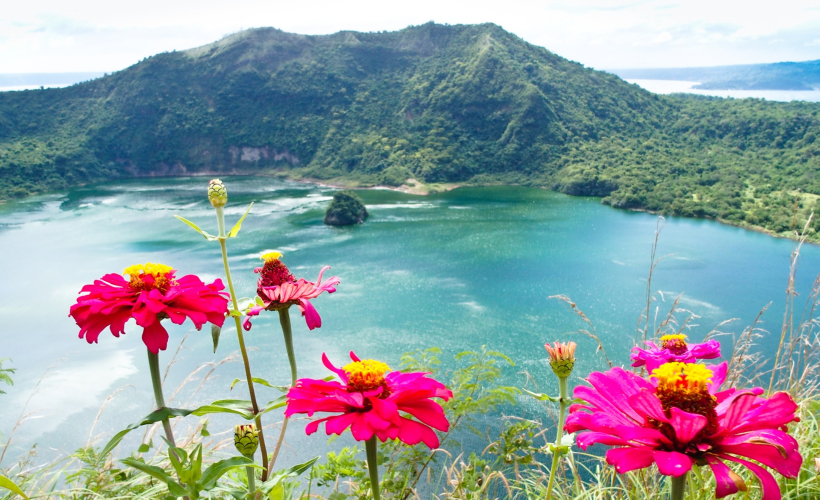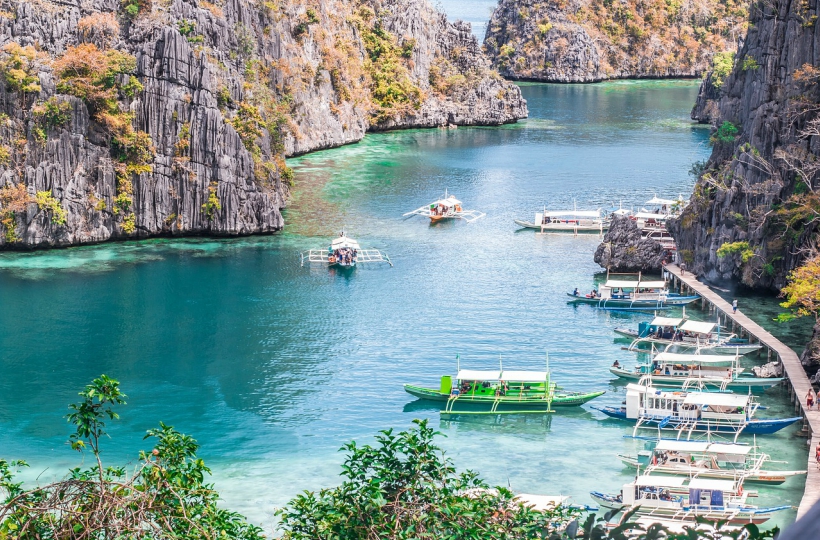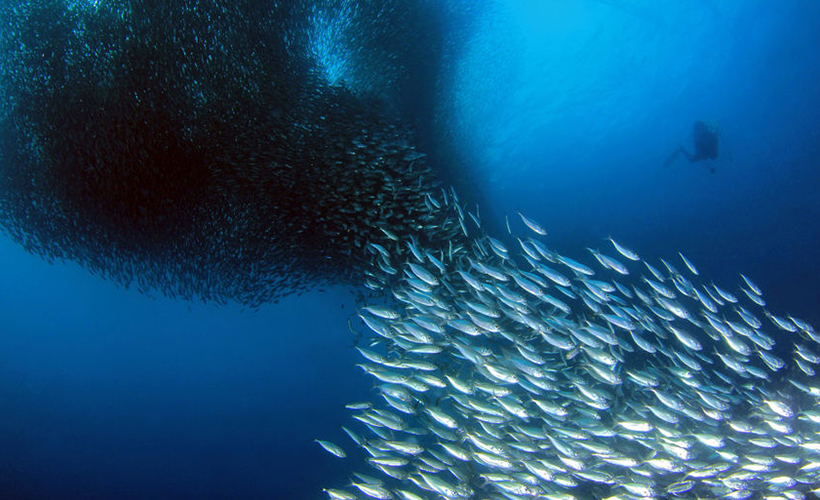
When you think of the annual sardine run, South Africa normally comes to mind for most scuba divers. What’s not widely known is that the Philippines hosts a sardine run as well. It’s set in the beautiful setting of the tropics with warm, clear water. The best part is the sardines in Moalboal are there all year round!
The sardine run in Moalboal, Cebu is made up of millions of sardines all grouped together in one (or a few) large bait balls. These bait balls are large schools of fish grouped together that protect most of the school of fish from being attacked by larger prey. The schools of sardines attract hunting fish like tuna, barracuda, thresher sharks, and jacks all set against the backdrop of a colourful reef that reaches down to 70 metres.
Interestingly, these sardines weren’t always around. They recently migrated to Cebu from the nearby Pescador Island and hang out about 30 metres off the coast at Panagsama Beach from where you can easily swim out to see them. Panagsama Beach, about a 20-minute trike ride from Moalboal town, is the main tourist area with a wide range of accommodation, restaurants, and dive centres. Even though it’s considered this part of Cebu’s ‘main tourist area’, it’s still less commercial than other areas in the Philippines, affording visitors a chance to experience excellent diving with a blend of authentic island life.
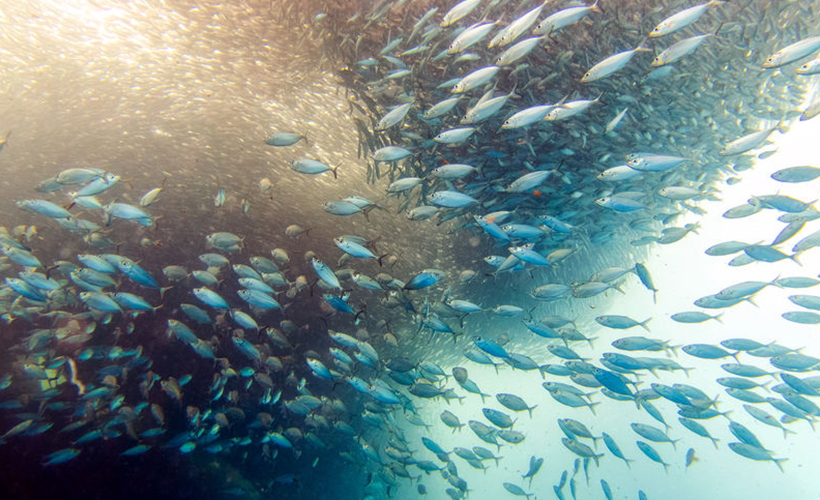
Up close and personal
While snorkelling with the sardines is possible, scuba diving gives visitors a more up close and personal experience. It also offers the opportunity to see mandarin fish, blue-ringed octopus, turtles, and frogfish.
Taking a plunge, divers can appreciate the vastness of the bait balls, sometimes so big that they seem to block out the sun! You can even enter the bait ball and be completely surrounded by sardines – an experience that’s slightly scary and awe-inspiring all at once.
The Philippine Government protects the sardines (and the income that they bring to the area) by limiting fishing here. Local fishermen are only allowed to fish the sardines in a small boat while using a hook and line; no nets are allowed. They’re also only allowed to catch enough fish to feed their family and a small amount to sell at the local market to earn an income.
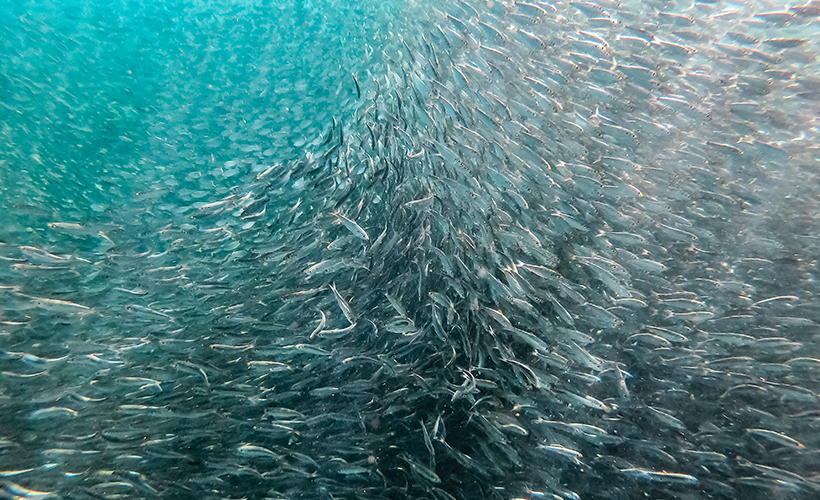
When to visit
Cebu generally has two seasons: rainy and dry. The rainy season is between June and October, while the dry season falls between November and May. Although typhoons are fairly common in the Philippines from May to October, and especially around September/October, Cebu is located outside the typhoon belt. This means it isn’t usually in the direct path of the storms, although they can bring rainy windy weather to the area.
The sardines, like everything in nature, are unpredictable. While they’re seen almost every day of the year, they do sometimes stay at depth. It’s best to check in with a local dive centre if you plan a trip to see them.
